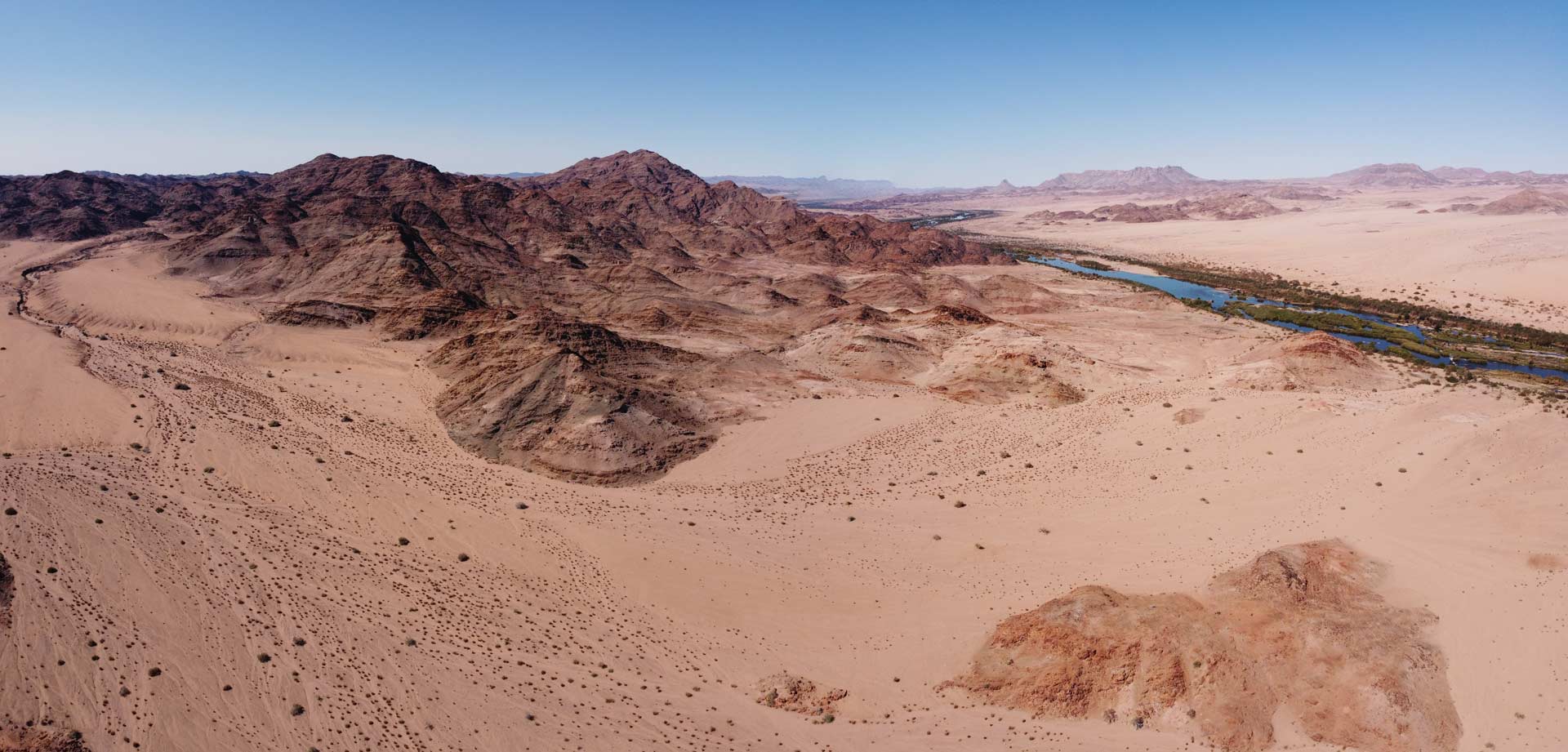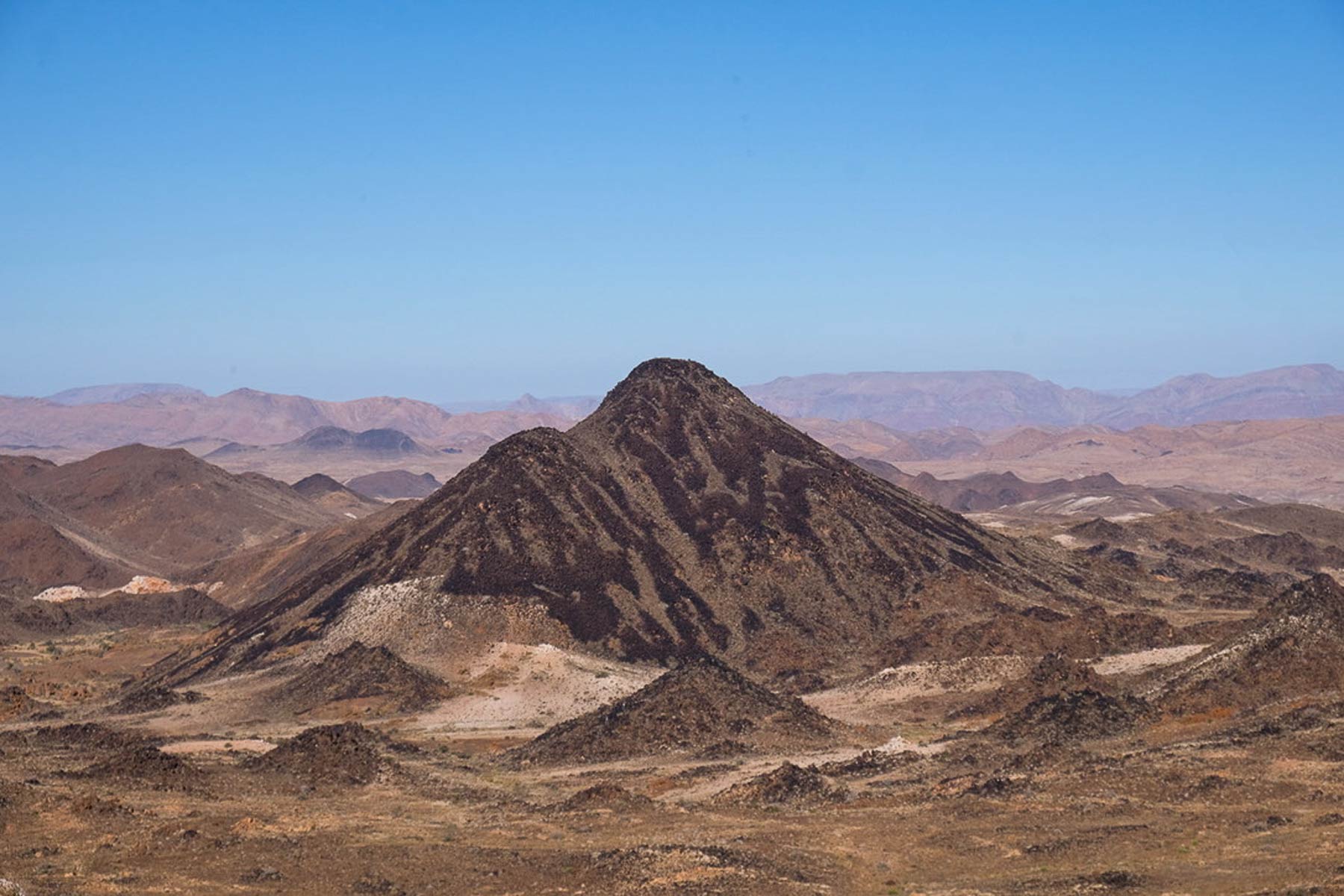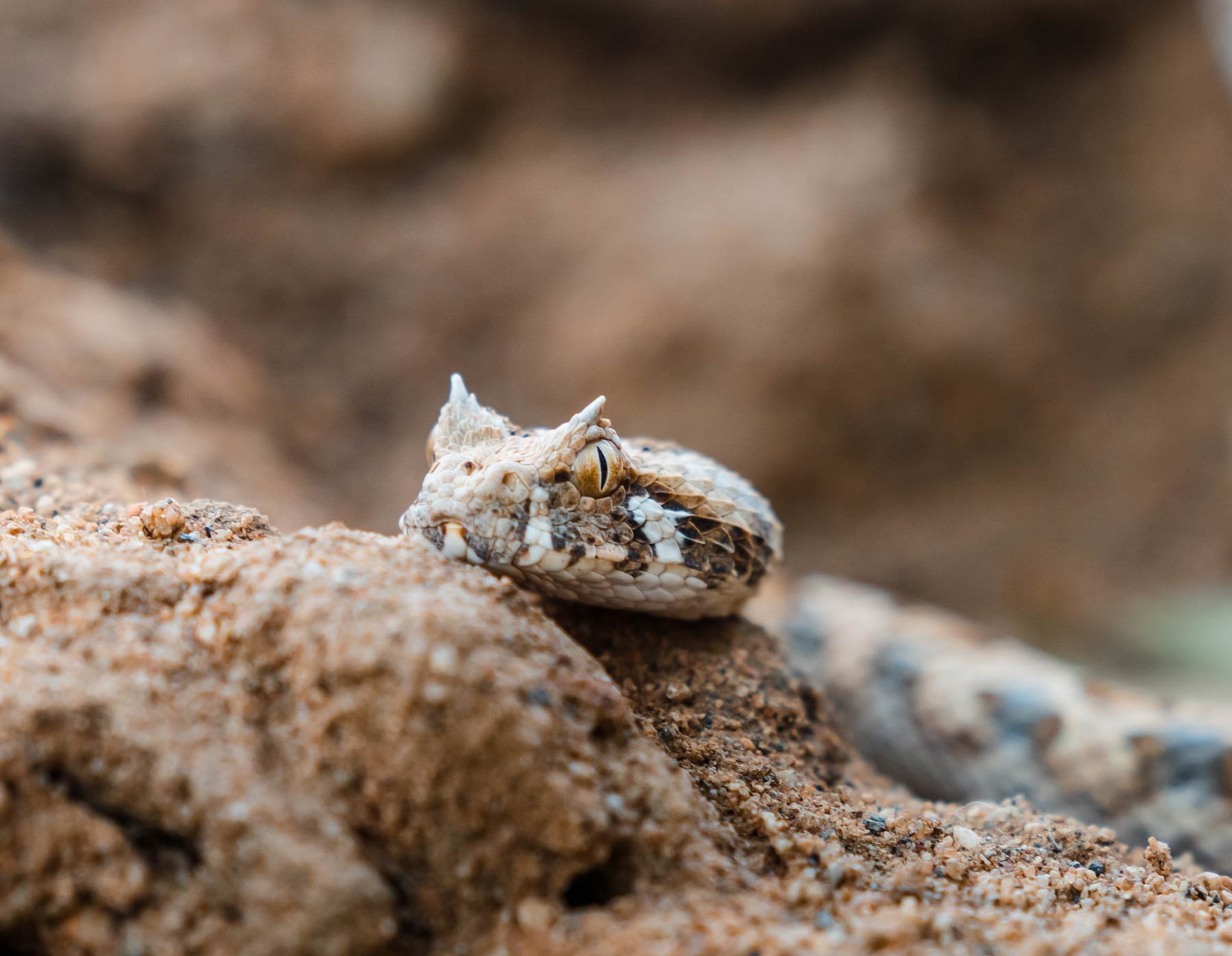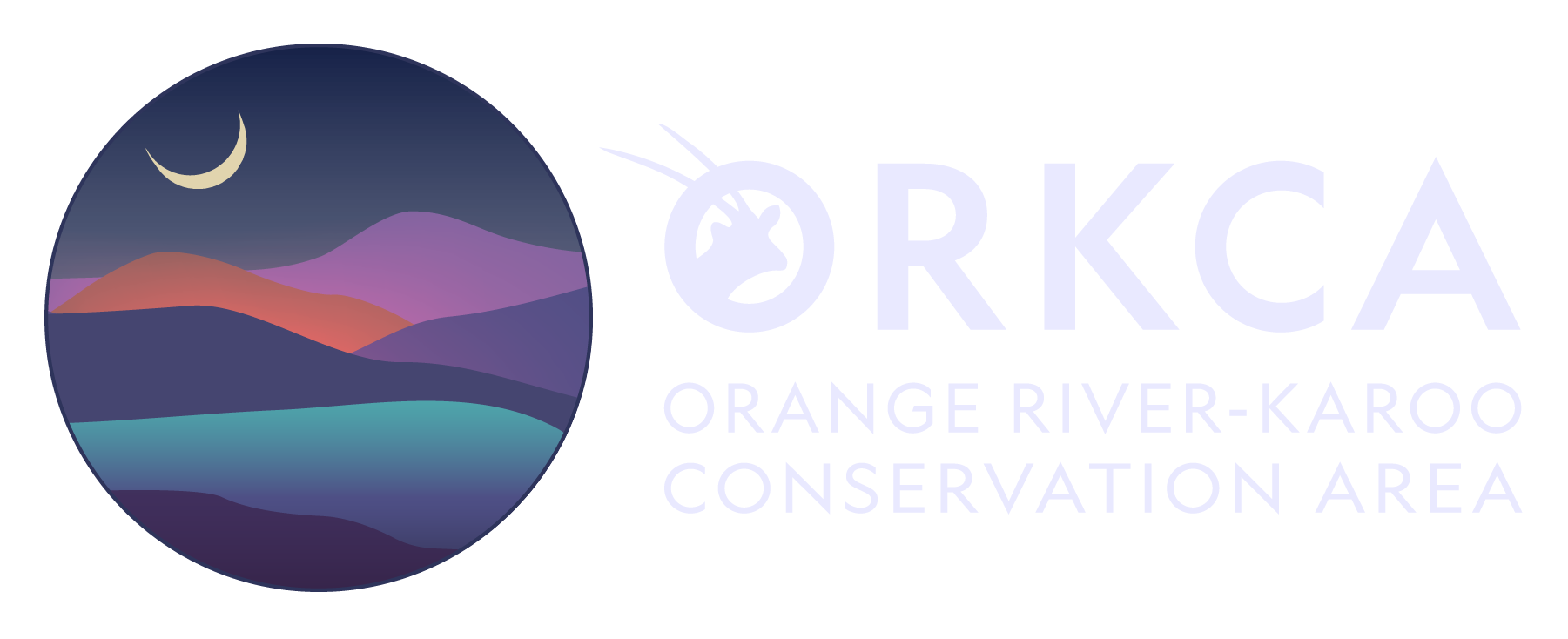THE ORANGE RIVER – KAROO REGION
ORKCA (Orange River-Karoo Conservation Area) is the managing custodian of a growing wilderness area in southern Namibia. Our mission is to ecologically restore and rewild the wider Orange River-Karoo ecosystem and expand our current landholding to 1 million hectares through partnerships and purchasing land. This is being done by scaling up landscape-level conservation and restoring ecological connectivity within the ecosystem whilst generating new livelihood opportunities for local communities. ORKCA acts as a catalyst for change by creating a new, sustainable and resilient economic land-use model based on the wildlife economy, carbon restoration, and local, sustainable businesses.

History
For generations, wildlife survived in this unforgiving landscape, migrating in response to the seasons and grazing conditions. In the 1950’s, large areas of the Karoo and Orange River catchment were given as a reward to soldiers who fought for the Allies in the Second World War. On these plots, known as Soldate Plaase or Soldier’s Farms, livestock farmers eked out a subsistence living in conditions unsuitable for farming – and with negative impacts on wildlife and the ecosystem. As farms grew, the land was sliced into pastures and fenced, cutting off migration and sparking human-wildlife conflict. Springbok, oryx, zebra, and other ungulates competed with livestock for grazing and were in most cases hunted to local extinction, and are still hunted for meat today. Predators, such as jackal, cheetah, leopard, hyena, and wild dogs were actively eliminated. 100 years further back, elephants, black rhinos, giraffe, and lion were present whilst buffalo and hippopotamus were settled along the Orange River. The region played host to the Trekbokken, the migration of 20 million springbok, an event that would have dwarfed the wildebeest migration of the Serengeti.
Nama People
ORKCA couldn’t carry out its vision without closely partnering with the Nama people across the region. The Nama are an ethic group spread over Namibia, South Africa and Botswana. They are the largest and only remaining group of the KhoiKhoi people, and speak the Khoekhoe language, famous for its clicking sounds. Their traditional lands ranged from Little Namaqualand in the western part of South Africa’s Northern Cape) and Great Namaqualand in southern Namibia. German colonial occupation in the 19th century was a time of oppression, displacement and even genocide, followed by apartheid where the Nama were forcefully encouraged to abandon their traditional lifestyle in the bush in favour of village life. Today a majority of the Nama live in the Karas region of southern Namibia, where under-representation and distance from central government means they remain mostly isolated.
ORKCA is creating community-driven businesses and projects with the Nama community, working towards activities like sustainable tourism, utilisation of invasive trees and regenerative farming to generate revenues while still benefitting nature. An incubator fund for profitable business models will spur local entrepreneurship, and we will create a culture of financial self-sufficiency within each project we develop together. We are committed to providing technical, financial and operational support to community conservancies for at least 10 years.
Geography and geology
The Southern Namibian landscape is a mesmerizing geological mosaic that is home to rock dating back two billion years. It is a truly ancient world in which the elements of wind and rain have carved a kaleidoscope of colour and shape from the rock, with the life-giving Orange River flowing through the middle. The Orange River is 2,200 km long, the fourth longest river in Africa that drains almost 50% of southern Africa, and has a heightened role in providing the only perennial water source through the 500,000 km2 of desert environment that spreads across southern Namibia and north-western South Africa. This landscape is known as the “Karoo”, which is derived from the Khoisan word meaning “land of thirst”. The Succulent Karoo, one of the world’s 25 biodiversity hotspots, the Nama Karoo and Desert biomes all meet here making the area an ecotone, a catalyst for evolution. Despite the importance of this landscape, ORKCA is the only privately protected area to host this type of ecotone, and less than 1% of the Nama Karoo is formally protected. Our rewilding approach is aimed at making the land more resilient to the impacts of climate change, creating more vegetation cover, allowing the land to function without interference from humans and restore natural processes.


Wildlife
Today, most of the Namibian South is still commercial farmland. From an ecosystem perspective there are two major challenges that ORKCA needs to tackle. First, the use of unsuitable livestock breeds and subsequent overstocking has created a negative cycle of overgrazing and land degradation, leading to a reduction of diverse grass species and seed banks, and occasionally desertification. This often results in a critical breakdown in grass recruitment, meaning that grass populations are not able to reproduce and spread their seed before being grazed again. Second, the unbalanced equilibrium between carnivores and herbivores is causing herbivores to become overly relaxed and lessen their movements, thereby overgrazing areas and leaving the ecosystem further out of balance. Large predators require huge territories, particularly in southern Namibia where prey densities are low.
ORKCA currently hosts only a fraction of the biodiversity that was once seen here. Small populations of oryx, springbok, eland, Hartmann’s mountain zebra, greater kudu and red hartebeest are found throughout the reserve. Leopard, brown hyena, caracal, African wildcat, aardwolf, black-backed jackal, bat-eared fox and cape fox make up the predators, but exist in low densities. There are no elephants, lions or cheetahs and limited rhino and giraffe can only be found in the west of the reserve. As the biodiversity returns through rewilding efforts and the landscape is deemed diverse and strong enough to support apex predators, we will evaluate what species are best suited and appropriate for the restored landscape.
